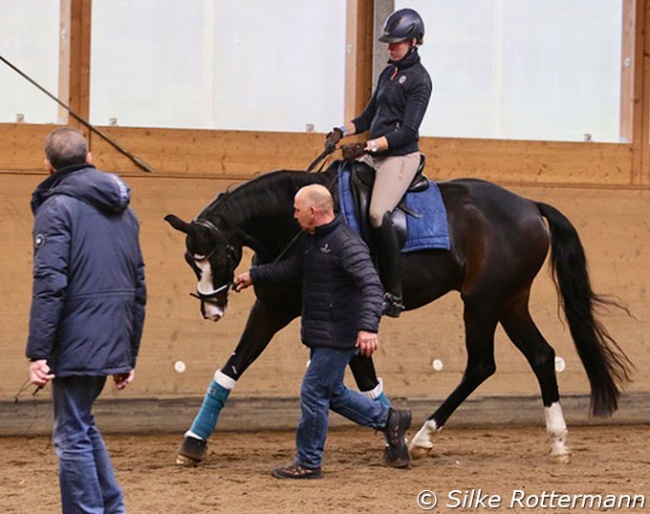
How to better brighten up a grim November weekend than spend it together with other horse enthusiasts? To widen the equestrian horizon, thanks to numerous top-class speakers and see words convincingly put into practice? From 5 - 7 November the tiny village of Ehlershausen (GER) not far from Hanover and close to Lower Saxony’s equestrian capital Celle saw about 50 riding instructors and other horse professionals as well as riders and interested horse lovers come together.
Michael Rohrmann, Pferdewirtschaftsmeister (Advanced riding instructor) successful in jumping and dressage at S-level, once again managed to attract several equestrian personalities to be part of his seminar titled "The Nature in Training."
Like two years ago the event was a great mixture of interesting lectures from different spheres of the horse-world and instructive practice in the beautiful indoor arena near the seminar hotel. The Jäger family had re-opened the doors of their stunning private riding facility which left nothing to be desired, neither by the horses stabled there, nor by riders and auditors.
A Learning Opportunity
Seminars like these are certainly not easy to organize, let alone in Corona times and one could sense the gratefulness of riders and auditors alike to have this unique learning opportunity in times like these.
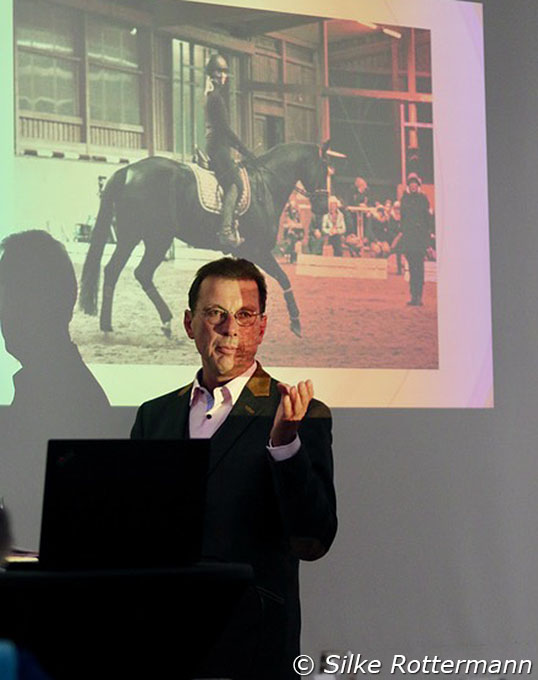
panel discussion
In this tenor the German guidelines are written and what they aim to achieve. Their detractors, which were numerous in more recent times, simply miss the point that a bad application doesn’t mean a method is wrong.
What is possible by following classical principles could be witnessed and savoured from Friday to Sunday at this clinic. A wide variety of horses and riders, in all shape and sizes and with different ambitions and training levels sought the expert advice of Stefan Stammer and Angelika Frömming. Both have worked together on two occasions in recent years and again complemented each other very well.
Stammer is certainly one of Germany’s most influential and popular equine therapists for many years. In his lecture on Saturday morning he stressed that it is always the "form follows function" principle and that every rider has the chance to form his horse positively if he respects its individuality. He also hit the nail when he mentioned that riders always have to take the decision to respect nature or not, with all consequences. "If we want to show spectacular trot steps it is always the decision between investing five years of serious training to achieve a maximum of relaxation, strength and elegance or to just take the horse’s head high and sacrifice the back of the horse for his leg performance," Stammer stated.
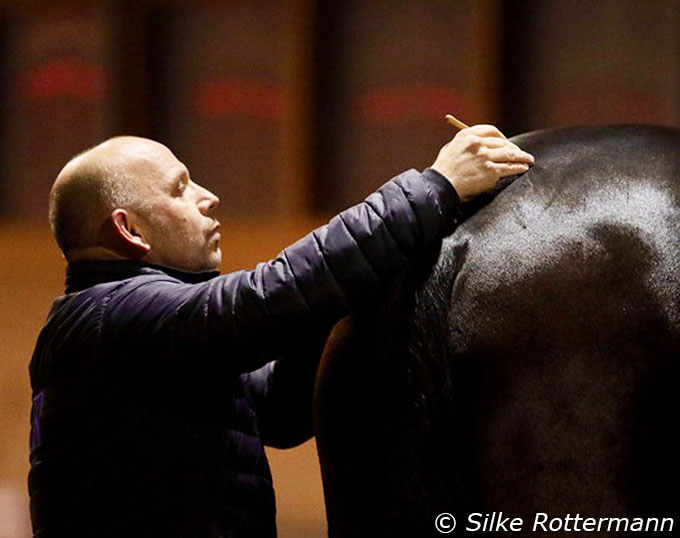
seminar day.
The approachable 53-year-old from the south of Germany is also a human physiotherapist and trained sports teacher by profession. he has developed the "Stammer Kinematics" which he describes as a holistic concept to explain, analyse, and improve the movement of the horse via a detailed analysis of problems within the horse’s movement sequence. Consequently therapeutic solutions are developed.
This is how he approached the horses on Saturday after lunch; assessing the weak spots and helping find a way out, while stressing that „I am not a riding instructor, I am not a trainer. I can only give the riders some ideas.
Classical Training Works for Every Horse
The trainer part then came into play with Angelika Frömming who has a wide equestrian background. She has trained with some of dressage sports legends, competed herself at Grand Prix level, and is probably best known through her judging at international level.The co-author of the German guidelines for many years now, she embodies classical training and the German guidelines like only few. At the seminar she gave a holistic overview how horse training has evolved over the centuries in a lecture on Friday evening.
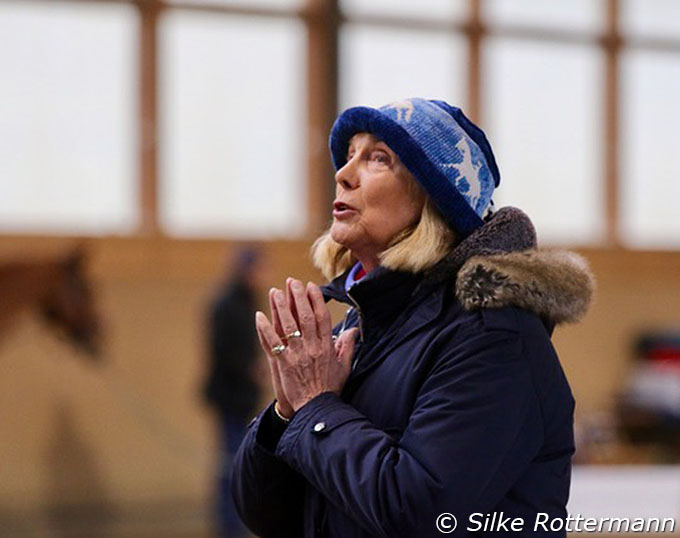
lessons she gave.
Frömming’s advice wasn’t only sound for the horse-rider-combos in the arena, but also to the audience, which could take to heart and take home for their own work: "A big mistake today is: If something works well, it is done immediately again. I prefer sending the horse to the stables with this good feeling that he did well and I stop this exercise for the day," she recommended when a pleasure rider was so happy after really well ridden lateral work. The rider would in fact have liked to continue.
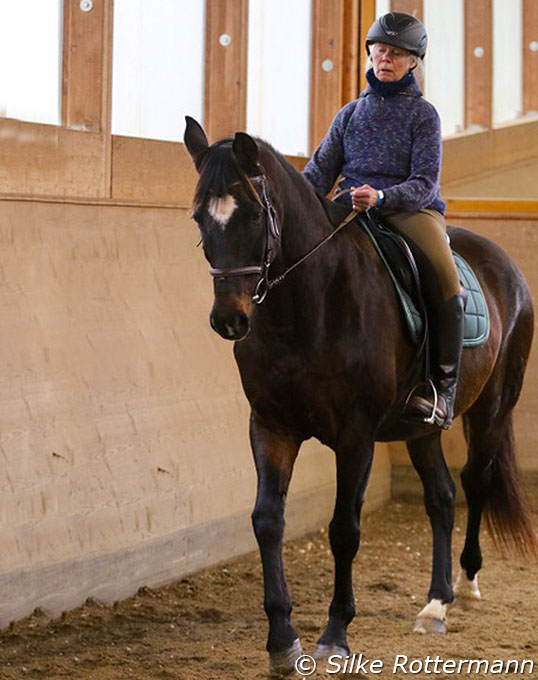
competition horse
It became obvious that the retired I-judge comes from a generation of riders who still know to value the walk as more than a warm-up and let-down gait. "You can ride walk as long as you want, but at a point in time you have to start working within this gait. The father of Harry Boldt always used to work in walk instead of doing posting trot at the beginning."
Accordingly Frömming took great care that during the working phase the walk was walked and not shuffled in a lazy manner, but at the same time she broke the lessons in little portions to allow horse and rider to take a breather now and then. She also didn’t shy away from telling a rider that his horse began to tire and that it would have been unfair towards the equine partner to continue.
Because a correct basis is the foundation of every movement ridden, some riders spent their first lesson on a big circle in order to get their horses in front of the vertical. Opening the head-neck-angle is not witchcraft if a horse has learnt to follow the rider’s hand and if it is just a habit of the rider to ride it a bit behind the vertical. With horses who have already firmly established this wrong way of going, a clinic cannot work miracles and can only give some ideas how to change the work for the better. In both cases it is paramount that the riders have somebody on the ground to support them. "Many riders simply do not feel that they ride their horses behind the vertical, that is why somebody has to watch and indicate it," Frömming stressed.
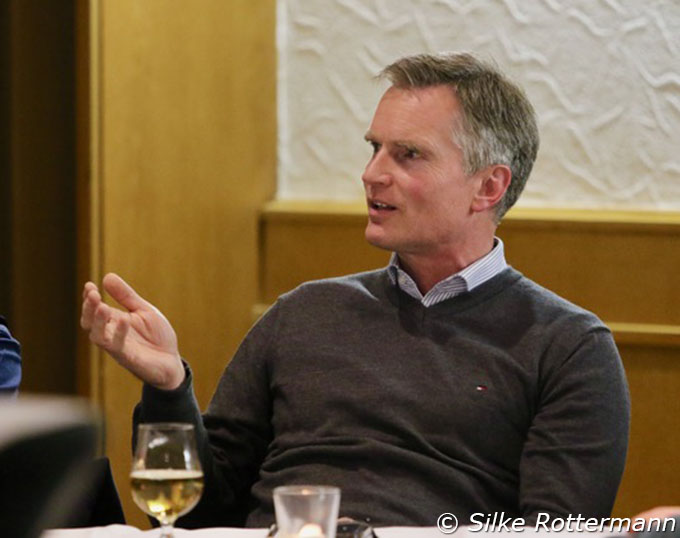
during the discussions
However, Frömming did not only work at the basics and with some riders on the improvement of certain dressage movements, her eagle eye didn’t miss the tiniest habits: "I know that some trainers, Paul Stecken was the most famous of them, like to warm the horses up in walk with totally given reins, but a horse is a horse and there can always something happen. And completely without rein contact I have absolutely no control." Thies Kaspareit responded with a twinkle in his eye, "but a neck control isn’t compatible with the mobile phone control nowadays." He made clear that certain habits of modern times threaten the safety of riders without them really being aware.
For the riders the instruction didn’t end with the seminar weekend. During the seminar days popular German riding instructor Renate Elberich from Münster took notes in a form of a protocol for every single rider. These were then discussed in a Zoom meeting a week after the seminar. So every rider got an additional instructive feedback.
Pay Attention to the Cervical Spine
While the practical part in the indoor arena once again showed that every horse, no matter if occasionally dressage ridden pleasure horse, unbalanced hot youngster or international dressage horse, needs an individual approach and sound basics to move correctly hence healthy, the lecture of Saturday evening made everybody aware that riders have to take even tiny signs of discomfort seriously.

alone marshmallow fluff. Instead a lipstick amount of foam.
"Despite the length of his neck the horse only has seven cervical vertebra and for that reason the nuchal ligament plays an important role for the stabilization. many horses today do not have it as highly developed in the lower part of the neck as the feral horse.“
It seems obvious that problems of the cervical spine might not be rare due to this anatomical fact, but they are often not diagnosed easily because one needs to read signs correctly and interpret them as symptoms. Pain which originates in the cervical spine can effect the whole body and so symptoms can be first misleading.
Dr. Pellmann listed symptoms such as stumbling and falls due to compression of nerves or unilateral laming of one hind-leg or a lack/inability of/to flexion and bend. Significant can also be a "girth test“" by saddling the horse or putting a lunging girth on it. As the long back muscle (musculus longissimus) connects the cervical spine with the pelvis, horses may then feel constrained at the withers and show defence.
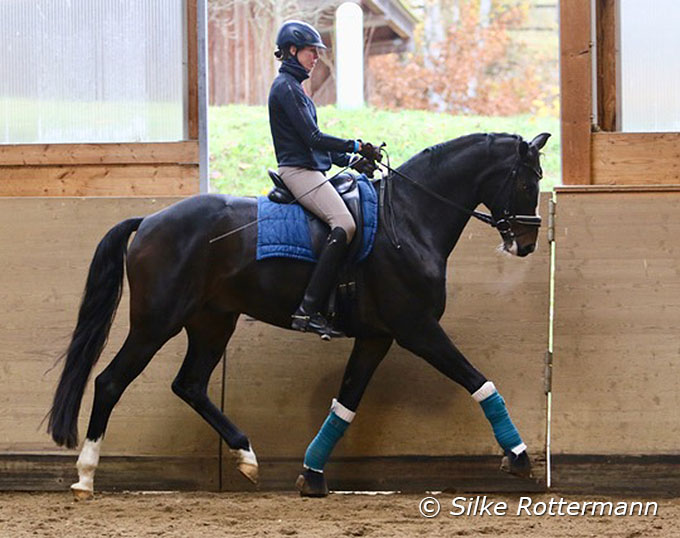
Dr. Pellmann stressed that riding horses in extreme head-neck-positions, may it be extreme hyperflexion or in absolute elevation, is detrimental because it causes tension of the neck and back muscles which in turn can cause inflammations, resulting in pain, and dysfunctions.
Professional Marketing Dominates Horse Breeding
After the first practical session on Friday morning, Cord Wassmann held a lecture on "Judging horses." The former head of the Hanoverian licensing committee put the focus on the changes of the past decades, which the 78-year-old had experienced closely.
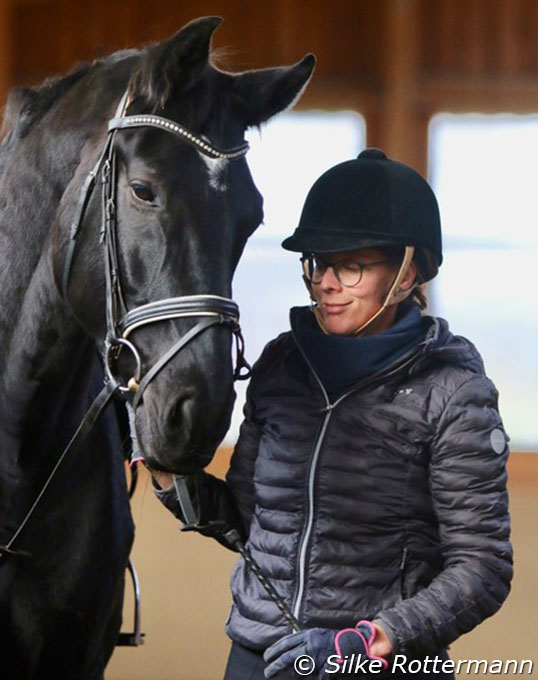
partnership between horse and rider.
Since the 1970s not only specific terms have changed, but also conformation and the way of moving of warmblood horses. Important are nowadays a horse’s type, quality and the longevity. To achieve the latter among other characteristics the so-called "genomic selection" plays an important role. Genomic hereditary factors are used to improve the health of the horses, but not to increase performance.
Interesting regarding dressage sport was Wassmann mentioning that the horse’s ability for impulsion is to a high degree genetic. Unlike in former times breeders nowadays rather breed for potential buyers and accordingly professional marketing. These factors now decide about which stallion gets used more often or not. If this is for the sake of the warmblood breeding or not, the future will show.
Harmony and Lightness are the Goal
After a weekend full of information and impressions one thing stood out: It doesn’t need a "high end dressage model," a term Stefan Stammer mentioned in his lecture, nor a special school of equitation: Harmony and lightness can be achieved by those who look for it and the German approach, expressed in its guidelines, is a more than suitable way to reach these goals.
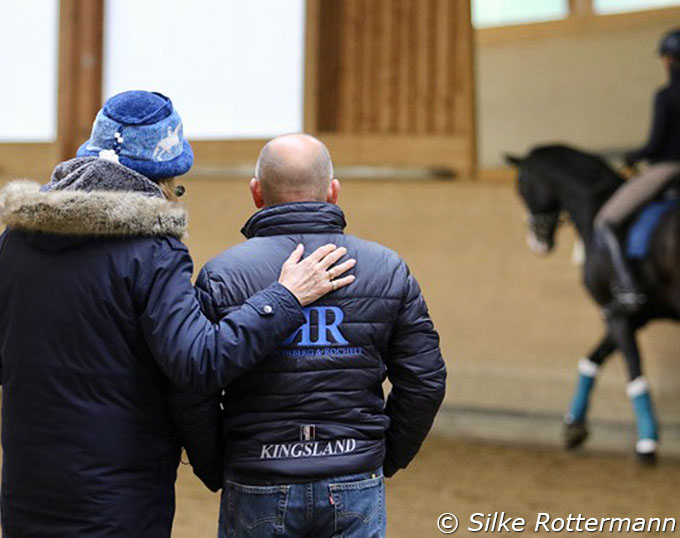
Text and Photos © Silke Rottermann
Related Links
"The Nature of Training": Workshop with Trainers, Judges and Riders on 5 - 7 November 2021
Trainining with Frömming: "Getting a Classically Schooled, Yet Incorruptible Eagle Eye of a Judge"
Fromming & Stammer Seminar 2016: A Get-Together of Biomechanics and Classical Dressage Training
Frömming & Stammer Seminar 21 - 23 October 2016: Biomechanics Meets Classsical Dressage in Daily Training